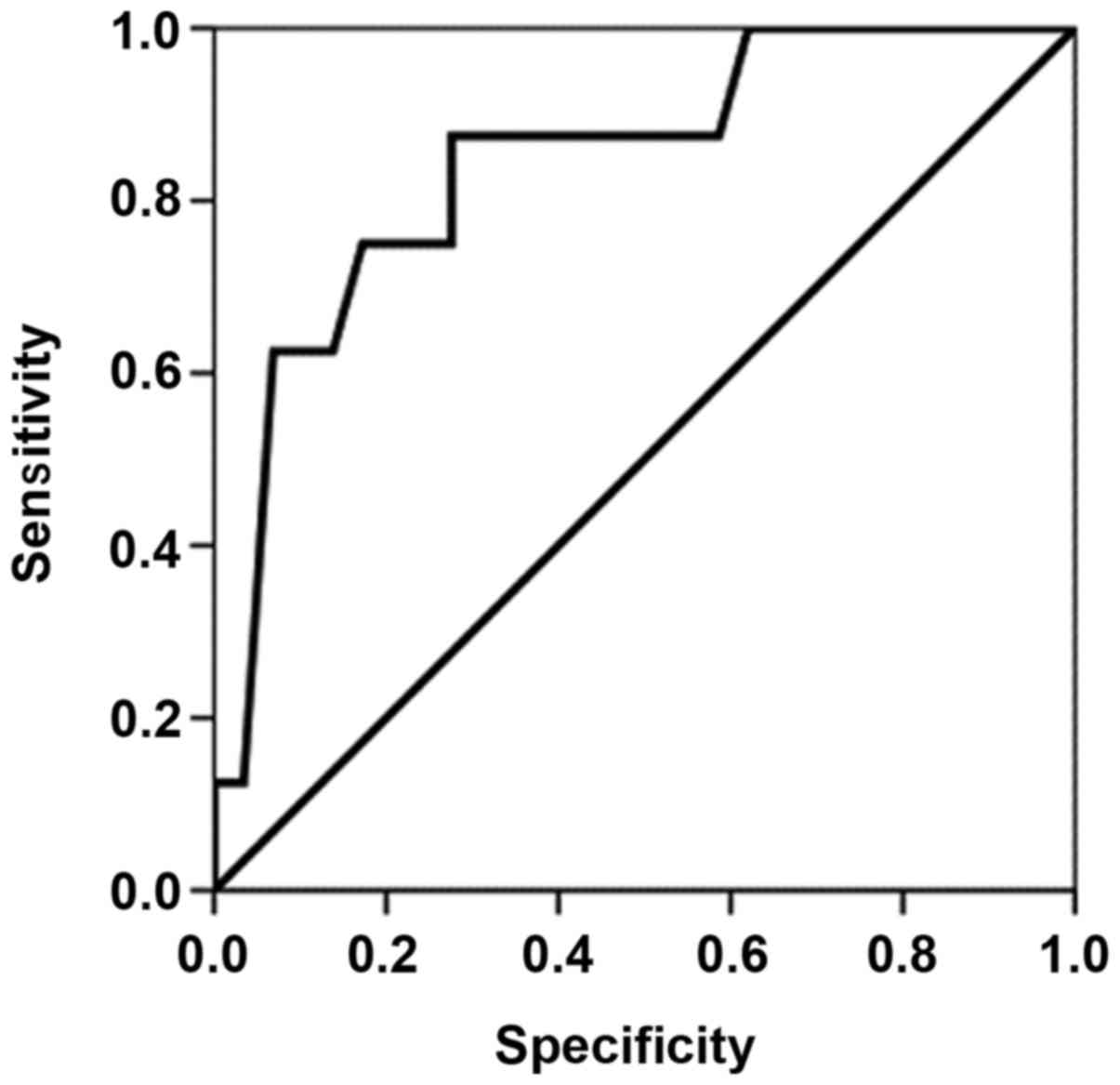Prognosis of patients with Acinetobacter baumannii infection in the intensive care unit: A retrospective analysis
- Authors:
- Published online on: February 21, 2017 https://doi.org/10.3892/etm.2017.4137
- Pages: 1630-1633
Metrics: Total
Views: 0 (Spandidos Publications: | PMC Statistics: )
Total PDF Downloads: 0 (Spandidos Publications: | PMC Statistics: )
Abstract
The present retrospective study aimed to investigate the prognostic factors for critically ill patients with an Acinetobacter baumannii (A. baumannii) infection. A total of 37 patients from the intensive care unit (ICU) were enrolled in the study. Data was collected from patients, including age, gender, ethnicity, A. baumannii infection status, concurrent infection status, prescribed antibiotics, Acute Physiology and Chronic Health Evaluation II (APACHE II) and sepsis‑related organ failure assessment (SOFA) scores, procalcitonin level, site of infection, shock, sepsis and renal replacement therapy status. Univariate and multivariate analyses were performed to determine the prognostic factors for mortality. In total, 8 out of the 37 patients included in this trial did not survive, resulting in an ICU mortality rate of 21.6%. Univariate analysis indicated that, in comparison with the survival group, APACHE II and SOFA scores were significantly higher in the mortality group (P<0.002 and P<0.001, respectively). A larger number of patients with septic shock were detected in the mortality group in comparison with the survival group (n=4 and n=3, respectively), whereas a larger number of patients were infected with multidrug‑resistant A. baumannii (MDRAB) in the survival group in comparison with the mortality group (51.9 and 14.3%, respectively). However, the prognosis was not significantly influenced by antibiotics administered, mixed infection or the site of infection. Multivariate analysis demonstrated that the APACHE II score was the only independent factor affecting the disease prognosis. Receiver operating characteristic curve analysis of the APACHE II score demonstrated that the area under the curve was 0.845±0.078. In patients with an APACHE II score of 15, the sensitivity and specificity predictions for mortality were 87.5% and 72.4%, respectively. The APACHE II score at diagnosis was the only independent factor found to assist in the prognosis of mortality for patients in the ICU with an A. baumannii infection. In conclusion, the results of the present study demonstrated that the APACHE II score may contribute towards the prognostic evaluation of patients in the ICU with an A. baumannii infection.










